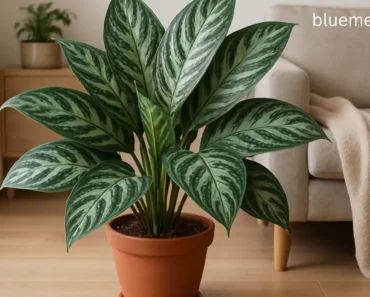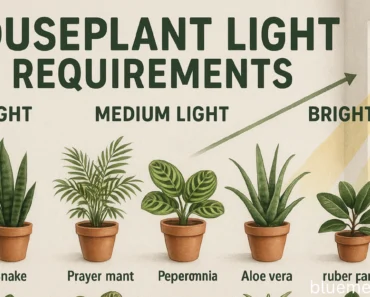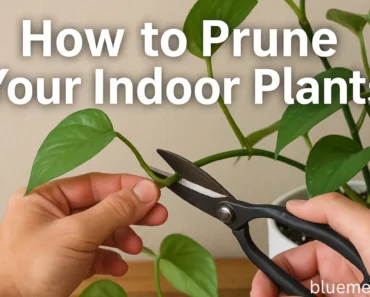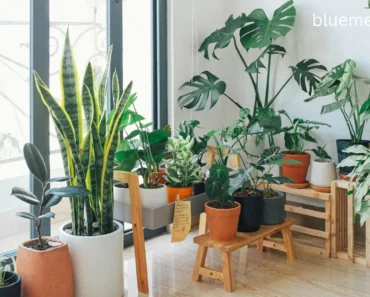Table of Contents
🌿 Key Takeaways:
- Most houseplants die from too much love (aka overwatering), not neglect
- • Use a soil-less potting mix—it should be airy and drain well, not actual soil.
- That east-facing window curse? I turned mine into a plant paradise
- The weight test changed everything about how I water plants
- Start with these 5 bulletproof plants even if you’ve killed cacti before
Let me paint you a picture: It’s 2019, and I’m standing in my living room, staring at what can only be described as a plant cemetery. My coffee table is home to a crispy fern, my bookshelf hosts a yellow-leafed pothos, and don’t even get me started on the orchid that looks like it gave up on life the moment I brought it home.
My best friend walks in, takes one look around, and says, “Girl, you know plants are supposed to be green, right?”
That stung. But it was also the wake-up call I needed.
Today, my apartment is a lush, thriving indoor garden of 47 houseplants. Friends now ask me for plant advice—a complete turnaround from my early days.
So what changed? Everything. In this guide, I’ll share all the lessons that transformed my plant care journey—and how you can use them too.
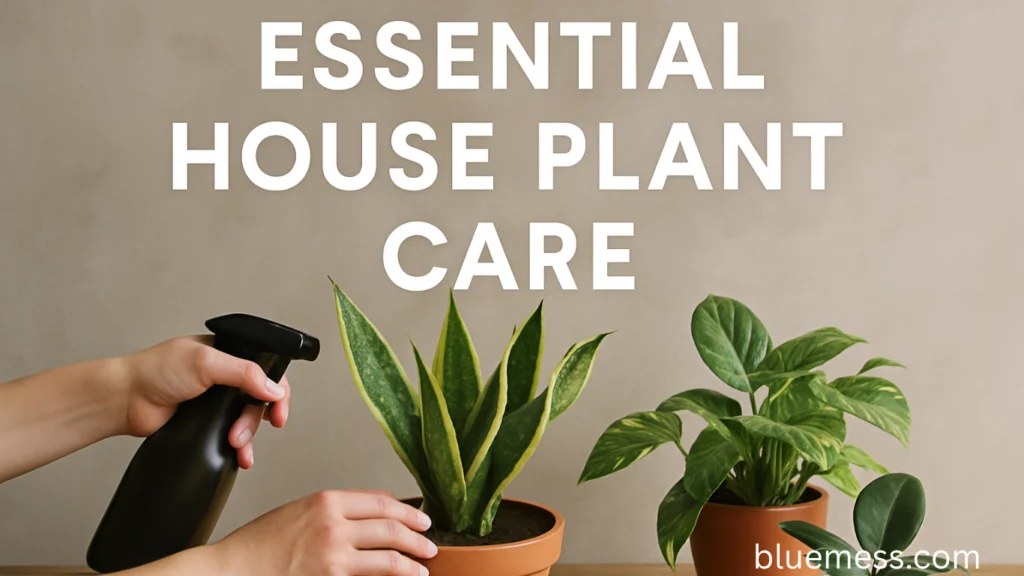
The Apartment That Hated Plants (Or So I Thought)
Here’s the thing about my old apartment – it had exactly four windows, and they ALL faced east. If you know anything about plants, you’re probably wincing right now. East-facing windows get maybe 3-4 hours of gentle morning sun, then nothing. Nada. Zilch.
I called it “The Dungeon” – a cold, dark place where plants went to die.
But here’s what I didn’t understand back then: I wasn’t working WITH my space. I was fighting against it, trying to grow sun-loving plants in what was essentially a cave. It’s like trying to raise penguins in the Sahara – theoretically possible, but why make life that hard?
The real problem wasn’t my apartment. It was me.
The Day Everything Changed (Thanks, Grandma)
My turning point came during a visit to my grandmother’s house. This woman has been growing houseplants since before it was trendy, and her living room looks like something out of a magazine. But here’s the kicker – her house is DARKER than my apartment.
“Grandma,” I said, gesturing at her jungle of plants, “how do you DO this? My plants look at me and immediately decide to die.”
She laughed and patted my hand. “Sweetheart, you’re probably loving them to death. Plants are like cats – they thrive on a little bit of neglect.”
Then she said something that revolutionized my plant game: “Stop thinking about what you think plants need. Start thinking about where they come from.”
Mind. Blown.
The “Soil” Secret That Nobody Tells You
Let’s start with the biggest lie in houseplant care: that potting “soil” contains actual soil.
Plot twist – it doesn’t! And it shouldn’t!
Real soil from your garden is like trying to grow plants in concrete when it’s in a pot. It gets compacted, doesn’t drain, and basically suffocates your plant’s roots. What you actually want is a fluffy, airy mix that’s typically equal parts:
- Peat moss (holds moisture)
- Perlite or vermiculite (creates air pockets)
- Compost (feeds your plants)
When I switched to proper potting mix, it was like my plants could finally BREATHE. The difference was immediate and dramatic.
Pro tip: Espoma makes an all-purpose mix that’s basically foolproof. I’ve converted half my friends to this stuff, and their plants thank me for it.
The Watering Wisdom That Saved My Plants (And My Sanity)
Okay, confession time: I used to water my plants on a schedule. Every Sunday morning, like clockwork, I’d make the rounds with my watering can, giving everyone a drink whether they needed it or not.
This is plant murder, folks.
Here’s what changed everything: the weight test. Pick up your plant pot. Does it feel light as a feather? Time to water. Still got some heft to it? Leave it alone.
I know, I know – it sounds too simple. But most houseplants come from tropical areas where they get drenched by rain, then dry out completely before the next storm. They don’t want to sit in wet soil for days. They want “wet feet” about as much as you want to wear soggy socks.
My rule now? When in doubt, don’t water. I’ve saved more plants by waiting an extra day than I ever killed by mild neglect.
Let There Be (The Right Kind of) Light
Remember my east-facing window situation? Turns out, that wasn’t a curse – it was a blessing in disguise. I just needed to choose the right plants.
Here’s your essential lighting decoder:
High light (6+ hours): South-facing windows. Think succulents, cacti, and that fiddle leaf fig everyone’s obsessed with.
Medium light (4-6 hours): East or west windows. Perfect for most houseplants like pothos, philodendrons, and peace lilies.
Low light (less than 3 hours): North windows or rooms away from windows. ZZ plants, snake plants, and cast iron plants laugh at darkness.
The game-changer? Matching plants to YOUR light, not trying to change your light for the plants. Work with what you’ve got!
The Fertilizer Truth Nobody Talks About
Plants need food. But here’s what I used to get wrong – I thought more food meant happier plants. NOPE.
Over-fertilizing is like force-feeding your plants a Thanksgiving dinner every day. They get nutrient burn, their leaves get crispy edges, and they generally look miserable.
My grandma’s advice? “Feed them like you’re seasoning soup – a little goes a long way.”
I use a water-soluble fertilizer (Jack’s Classic, if you’re curious) at quarter strength every two weeks during growing season. That’s it. No complicated schedules, no different foods for different plants. Keep it simple, and your plants will thank you.
The Magnificent Seven: Bulletproof Plants for Reformed Plant Killers
If you’re nervous after past plant failures, start with these almost unkillable options: Snake Plant (Sansevieria), ZZ Plant, Pothos, Spider Plant, Cast Iron Plant, Chinese Evergreen, and Peace Lily.
Snake Plant: Thrives on neglect, tolerates low light, cleans your air, and forgives missed waterings.
2. ZZ Plant (Zamioculcas zamiifolia)
ZZ Plant: Glossy, drought-tolerant, virtually maintenance-free, and hardy in low light.
3. Pothos
Pothos: Easy, fast-growing, propagates easily for sharing, and adapts to most conditions.
4. Spider Plant
Spider Plant: Prolific, easy to grow, produces new plants quickly, nearly impossible to kill.
5. Cast Iron Plant
Cast Iron Plant: Nearly indestructible, tolerates neglect and tough conditions.
6. Chinese Evergreen
Chinese Evergreen: Tolerates low light, needs little care, has attractive patterned leaves.
7. Peace Lily
Peace Lily: Warns you when thirsty with dramatic wilt, bounces back, and features white blooms.
The Mistakes I Made So You Don’t Have To
Let me save you some heartache and dead plants:
The Helicopter Plant Parent: Checking on your plants every five minutes and watering “just in case” is not love – it’s suffocation. Step away from the watering can.
The Pot Size Overachiever: Putting a small plant in a huge pot “so it can grow” is like putting a goldfish in the ocean. Too much soil stays wet too long. Size up gradually.
The Miracle Grow Maniac: More fertilizer ≠ bigger plants. It equals burnt roots and sad times. Less is more, people.
The Window Wanderer: Moving plants around constantly to “find the perfect spot” stresses them out. Pick a spot and let them adjust for at least a month.
The Denial Expert: If a plant is dying, figure out why. Don’t just buy another one and repeat the cycle. That’s the definition of plant insanity.
Your Essential House Plant Care Action Plan
Ready to transform your black thumb? Here’s your week-by-week guide:
Week 1: Assess Your Kingdom
- Identify your light situations (use a compass app on your phone)
- Pick ONE easy plant that matches your brightest spot
- Get proper potting mix (not garden soil!)
- Buy one plant. ONE. Resist the urge to adopt the entire garden center
Week 2-4: Learn Your Plant
- Practice the weight test daily (don’t water, just check)
- Observe how quickly the soil dries in your environment
- Note any changes in leaves or growth
- Resist the urge to do ANYTHING except observe
Month 2: Expand Slowly
- If your first plant is thriving, add ONE more
- Try a different type to learn various care needs
- Start a simple plant journal (sounds nerdy, works brilliantly)
Month 3: Level Up
- Experiment with propagation (pothos is perfect for this)
- Try a slightly fussier plant if you’re feeling confident
- Join a local plant swap group (plant people are the BEST people)
The Plot Twist Ending
Remember that plant-hating, east-facing apartment? I’m still here. The only thing that changed was my approach.
These days, visitors walk in and immediately ask, “How do you keep all these plants alive?” I just smile and say, “I learned to listen to them instead of suffocating them with love.”
My grandmother was right – plants are like cats. Give them what they actually need (not what you think they need), respect their boundaries, and they’ll reward you with beauty and the occasional flower.
Oh, and that friend who roasted my plant cemetery? She now texts me panicked photos every time her pothos gets a yellow leaf. How the tables have turned.
Ready to Start Your Plant Parent Journey?
Essential house plant care isn’t about having a green thumb – it’s about understanding what your plants actually need and delivering it consistently. Start with one plant, master its care, then build your jungle from there.
Remember: every expert plant parent has a graveyard of plants they learned from. The difference is, they kept trying until they figured it out.
Your turn: What’s your toughest plant struggle right now? Drop a comment below so we can troubleshoot it together! Or, if you’ve conquered your brown thumb, share your favorite tip or success story—the plant community needs your win. Ready to take the next step? Pick one plant this week, put these tips into action, and tag your progress online. Let’s grow your indoor jungle—starting today!
Author
George Wine is a seasoned gardening expert with over 20 years of experience in the field of horticulture. His passion for plants and nature has driven his career, where he has honed his skills in various aspects of gardening, from landscape design to plant care. George holds a Master of Science in Horticulture from the University of California, Davis (UC Davis), a prestigious institution known for its research and advancements in plant science.
Throughout his career, George has worked with a diverse range of clients, offering tailored solutions to enhance outdoor spaces and create thriving gardens. His knowledge and expertise allow him to provide invaluable advice, ensuring that both novice and experienced gardeners achieve their gardening goals. Whether you’re looking for tips on sustainable gardening practices, innovative design ideas, or advice on specific plant species, George is here to help you cultivate the garden of your dreams.

